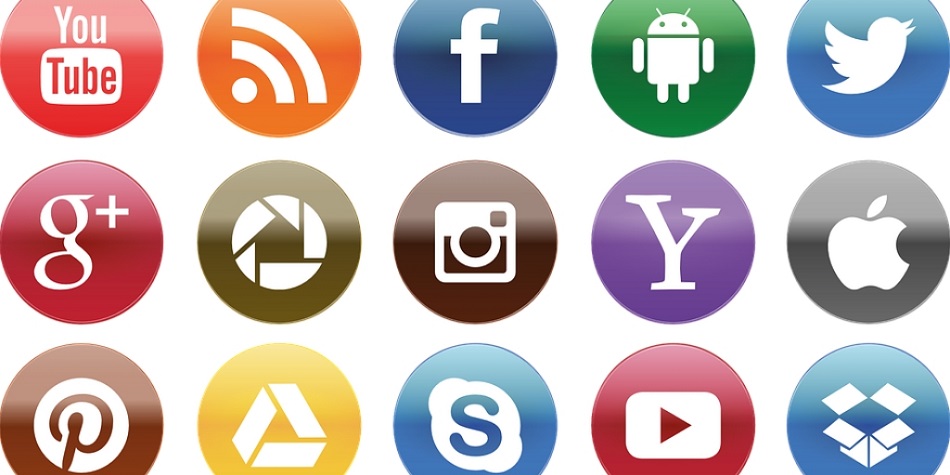
by Fronetics | Nov 8, 2018 | Blog, Content Marketing, Current Events, Logistics, Marketing, Strategy, Supply Chain
Artificial intelligence (AI) is changing the way the global supply chain operates and may make most supply chain management companies obsolete in 5-10 years. What can your company expect and what are the best strategies for preparing?
AI has a significant presence in supply chain management. Leading companies already use AI to run predictive analytics and to automate repetitive, labor-intensive tasks like purchasing, invoicing, and customer service. But executives are still needed to make decisions after reviewing data.
[bctt tweet=”Authors from a recent study predict that in 5-10 years the supply chain will be run entirely by digital technologies that could eliminate the need for human oversight.” username=”Fronetics”]
According to a study from the Harvard Business Review, that’s about to change. In 5-10 years, the authors predict, the supply chain will be run entirely by digital technologies that could eliminate the need for human oversight. Blockchains can coordinate between the parties involved in flexible supply networks, improving transparency and crisis-response times. Robotics already automate warehouses and fulfillment centers, increasing efficiency and minimizing the risks of employee injury. Moreover, digital technologies are increasingly able to execute purchasing and inventory management tasks.
Digital control towers
The new nerve-center for leading organizations’ operations is the “digital control tower,” typically a room with walls of high definition screens showing real-time graphics and information on every step in the supply chain. Data analysts staff these rooms 24/7, monitoring the flow from order to delivery.
These control towers provide end-to-end visibility into global supply chains. Process bottlenecks and inventory shortfalls can be predicted and managed before problems develop. Digital control centers allow more predictive management styles based on up-to-date and accurate information, which results in increased customer focus and process efficiency. It is an operational model that is gaining popularity across business sectors.
What does this mean for supply chain management?
Technology will continue to replace human labor in supply chain management. As data analytics and self-learning technology develop, we can expect to see more kinds of jobs performed by AI. Planning for this trend towards automation is essential for all supply-chain companies.
The role of supply chain executives continues to change. Instead of managing people performing repetitive and transactional tasks, executives are working with a smaller number of highly specialized data experts to design information and material flows. The skill set associated with supply chain management will shift to focus on data analysis and algorithms, which will require new hiring or employee re-training. Finding skilled analysts to fill those roles will be crucial to organizations seeking to adapt to new supply chain conditions
Related posts:


by Fronetics | Oct 31, 2018 | Blog, Content Marketing, Current Events, Marketing, Social Media
Also in social media news, October 2018: Snapchat partners with Amazon on visual search tool, Google Plus is shutting down, and Instagram adds Quick Replies for business accounts.
With the arrival of Halloween, we know that the holidays are quickly approaching. Consumers will be busy making plans and diving into holiday specials. But social networks will also be hard at work trying to stand out against brick and mortar stores as an alternative for holiday preparations.
[bctt tweet=”Businesses looking to gain traction during the holiday season will reap the benefits of social networks, which are including new features and updates that will help brands connect with new (and existing) users.” username=”Fronetics”]
Businesses looking to gain traction during the holiday season will reap the benefits of social networks, which are including new features and updates that will help brands connect with new (and existing) users. With a heavy focus on customer engagement, these new options help businesses stay connected with new features like Quick Replies on Instagram. These small but helpful updates will allow companies to have a greater reach without extra work for their marketers.
Here’s your social media news for October 2018.
Instagram founders leave Facebook
Kevin Systrom, CEO, and Mike Krieger, CTO, resigned from Instagram this week amidst rumors of tension with Facebook founder and CEO, Mark Zuckerberg. “We’re planning on leaving Instagram to explore our curiosity and creativity again. Building new things requires that we step back, understand what inspires us and match that with what the world needs; that’s what we plan to do,” writes Systrom in a statement for Instagram. Bloomberg News reports that tension between co-founders grew over the direction of Instagram. These departures create an opportunity for Facebook to oversee Instagram more directly.
LinkedIn updates Groups
LinkedIn Groups now offer more engaged conversation tools including embedded videos, images, and updates to posts, alerts, and much more. “Over the past year, we’ve focused on bringing conversations to the forefront on LinkedIn, adding new features to make it easy for you to talk to your professional communities. The new Groups experience helps you take advantage of all these conversations tools with a seamless, faster experience so you can easily participate in your groups,” writes Mitali Pattnaik for LinkedIn’s blog. All groups are currently being updated with these features.
Snapchat Partners with Amazon on visual search tool
Snapchat users are going to have a new way to search for products on Amazon, one of the world’s biggest e-commerce corporations. Using the Snapchat app, users can point their camera at a product or barcode and, once recognized, a link will appear to that product (or a similar one) on Amazon. Though the update is currently only available to a small group of users, Snapchat is hoping to roll out the new feature to all users shortly.
Instagram rolls out Quick Replies for business accounts in direct messenger
Instagram introduced Quick Replies for business accounts in direct messenger this month. The new feature allows businesses to create quick responses to frequently asked questions, like shipping rates and contact information. Quick Replies will help businesses communicate quickly and efficiently with users. Instagram tested the new functionality back in May, but just made the update available on all devices and the web.
Google Plus shuts down
Google Plus, Google’s social network, is shutting down for good after a security breach that exposed up to 500,000 users between 2015 and 2018. Ben Smith, Google’s vice president of engineering, acknowledged that Google detected a security issue back in March, but immediately addressed it. In a blog post on October 8, Smith writes, “A review did highlight the significant challenges in creating and maintaining a successful Google+ that meets consumers’ expectations. Given these challenges and the very low usage of the consumer version of Google+, we decided to sunset the consumer version of Google+. “
Related posts:


by Fronetics | Oct 25, 2018 | Blog, Current Events, Supply Chain
U.S. Consumers plan to spend a whopping $9 billion, the second highest spending amount in 14 years, on costumes, candy, decorations, and more to celebrate Halloween this year.
The National Retail Federation anticipates spending for Halloween in 2018 will come close to last year’s $9.1 billion all-time record.
[bctt tweet=”“The economy is good, and consumer confidence is high, so families are ready to spend on Halloween this year,” NRF President and CEO Matthew Shay said.” username=”Fronetics”]
“The economy is good, and consumer confidence is high, so families are ready to spend on Halloween this year,” NRF President and CEO Matthew Shay said. “Retailers are stocking up to supply children, pets, and adults with their favorite decorations, candy, and costumes for the season.”
The NRF’s annual survey found that 175 million Americans will celebrate the holiday, with over half of celebrants planning on dressing in costume. Expect to see plenty of Disney princesses, Star Wars characters and superheroes at your door.
Pet costumes are still the rage with nearly 20% of celebrants planning to dress up their pet this year. “Out of 31.3 million Americans planning to dress up their pets in costume, millennials (25-34) are most likely to dress up their pets, the highest we have seen in the history of our surveys.”
Pumpkin won out as the top pet costume (11%), with hot dog not far behind (7.6%). Will you be dressing up your dog or cat this Halloween?
Check out our infographic of other interesting Halloween 2018 facts from the NRF’s survey of 6,961 consumers below.
Infographic: Halloween 2018

(Made with Canva)
Related posts:


by Fronetics | Oct 11, 2018 | Blog, Content Marketing, Current Events, Logistics, Marketing, Social Media, Supply Chain
Consider these chatbot platforms for supply chain operations that can help you create artificial intelligence bots to interact with your prospects.
Chatbots are on the lips of every marketer these days hoping to automate some of their processes. These artificial intelligence computer programs are designed to conduct conversations, simulating how a human would interact. If you haven’t already, check out this introduction to chatbots for the supply chain.
[bctt tweet=”Chatbots are on the lips of every marketer these days hoping to automate some of their processes. These artificial intelligence computer programs are designed to conduct conversations, simulating how a human would interact.” username=”Fronetics”]
There are countless options for platforms that let you create and customize chatbots. Here are the 5 most important chatbot platforms for supply chain operations to know and consider integrating into their websites.
5 chatbot platforms for supply chain operations
1. Chatfuel
Chatfuel is a great option for marketers who lack programming experience, as it does most of the hard work for you. Reportedly used by companies including MTV, TechCrunch, BuzzFeed, British Airways, and Adidas to create their chatbots, Chatfuel provides easy-to-use resources with a simple user interface that lets you create a chatbot in less than 15 minutes.
2. ChatScript
ChatScript is a four-time winner of the Loebner Prize for the most human-like artificial intelligence. While it doesn’t require advanced programming knowledge, it provides an open-source framework for developers to build and deploy chatbots.
3. Facebook Bots for Messenger
Facebook’s Bots for Messenger is a tool that allows businesses to build chatbots for Facebook’s Messenger platform (which is currently used by nearly a billion people). Its three main capabilities are its send/receive API, generic message templates, and the ability to customize the welcome screen users first see when interacting with your bot.
4. Botsify
A popular chatbot platform, Botsify lets anyone create bots easily without needing to write any code. It provides templates with a range of drag-and-drop functionalities. Additionally, it boasts human takeover ability to ensure a smooth transition from a bot to a human at the appropriate point in the sales funnel.
5. Flow XO
This platform offers the templates and tools necessary to create a talking bot, and lets you run and test functionalities with a built-in test console. Flow XO also offers a provision for you to connect with your customers over voice and chat when required in the conversation.
While email marketing continues to be a key tactic, marketing via messaging apps is becoming more and more expected. These chatbot platforms for supply chain operations offer ease, convenience, and a positive customer experience. They’re worth considering!
Related posts:


by Fronetics | Oct 1, 2018 | Blog, Content Marketing, Current Events, Logistics, Marketing, Strategy, Supply Chain, Talent
Considering instituting a work from home policy for your business? Ask yourself these three questions first.
As the supply chain becomes increasingly digital, many employers may be considering implementing a work from home policy. After all, we know one way to attract millennial talent is to allow for this kind of flexibility.
But before you make the decision to open the door to a work from home arrangement, consider these three questions.
3 questions to ask before implementing a work from home policy
1. Are your employees organized and self-motivated?
Ask any employee who works remotely, and they’re very likely to tell you that working from home makes them happier and more productive. And they aren’t necessarily wrong. There’s certainly evidence to suggest that with today’s technology, there’s essentially no downside to working from home, and it does often enhance productivity.
But working from home isn’t for everyone. Writing for the Harvard Business Review, marketing strategist and Duke University Professor Dorrie Clark suggests that workers considering a work-from-home arrangement first take a moment to introspect and understand how they work best.
According to author Natalie Sisson, “If you’re good at managing your own time, and you’re productive and have discipline, you’ll be able to do work from anywhere. But if you need to be in one place, and you need to go into an office, or need to be surrounded by the same people all the time, it probably won’t work for you.”
2. Is there a wealth of local talent?
One of the less-often-considered factors when businesses consider remote work arrangements is actually an important potential benefit for employers. Not every location has a tremendous amount of local talent, but that doesn’t have to limit your business. If you’re in an area where finding qualified employees is a challenge, making remote options available can be a big resource — essentially, the world is your oyster!
[bctt tweet=”Not every location has a tremendous amount of local talent, but that doesn’t have to limit your business. If you’re in an area where finding qualified employees is a challenge, making remote options available can be a big resource.” username=”Fronetics”]
Consider having remote hires come onsite for training, team-building, or orientation, and make sure they’re equipped to meet the requirements of their positions. Once that initial foundation is laid, and expectations are clear, they can work from anywhere in the world — and save you the office space.
3. How much collaboration is required?
Are you considering remote work options for positions that require extensive collaboration with other employees? If so, it’s not necessarily a deal-breaker, but it does require some additional forethought.
With the technology available today, remote collaboration should theoretically be a piece of cake. But it’s important that everyone be on the same page about expectations. If remote workers are needed in a scheduled daily meeting, for example, it’s important that that expectation be made clear from the outset.
It’s also crucial to make sure that remote workers are given the resources they need to collaborate with their colleagues, and that they have a good understanding of the technology they’ll be using.
Work from home arrangements can be beneficial for employees and employers alike. But it’s important to consider all the variables to ensure that it’s the right thing for your business.
Related posts:


by Fronetics | Sep 27, 2018 | Blog, Content Marketing, Current Events, Marketing, Social Media
Also in social media news, September 2018: Twitter launches audio-only live streaming, and Facebook Creator Studio is going global.
The kids are back to school, football is back on tv, and the leaves are starting to change colors. This can only mean one thing: fall is officially upon us. What does this mean for our most popular social media platforms? Similar to battling dropping temperatures, it’s time to heat things up to keep users engaged and active.
Especially for Facebook. In a new survey by the Pew Research Center, users revealed how their engagement with the social media platform has changed in the wake of privacy and security concerns. Most notably, 44% of Facebook users ages 18 to 29 reported deleting the Facebook app from their phone in the past year. Despite the fall chill, Zuckerberg and his crew need to continue heating up their security updates and find new ways to gain user trust and ensure user privacy.
Here’s what else has been happening in September with the hottest social media platforms and how the latest updates help businesses gain exposure and target new audiences.
Here’s your social media news for September 2018.
Facebook Expands Ad Pixels to Group
Facebook will now allow pixels to be added to a brand’s Facebook Group. This expanded feature will enable marketers to track user growth, activity, and engagement with their websites. Facebook is hoping the new update will boost attention for Groups as an advertising avenue. “Facebook Groups are the new email for brands. They get push notifications. The engagement rate of Groups is extremely high. It makes sense they’re going to put a pixel in there, just like you would with email, because now through groups you can track conversions,” says Nik Sharma, Director at Hint Inc.
Snap Inc. Announces New Webinars for Ad Tools
Snap Inc. announced two upcoming webinars that provide more insight into how Snapchat can boost marketing campaigns for advertisers. These webinars are “for advertisers who want to learn more about the Snap Pixel. From how it differs from other pixels, the optimizations and attribution it enables, to implementation and troubleshooting, we’ll cover everything you need to know to power your eCommerce campaigns.” Though Snap’s niche is young adults, the app is working overtime to provide more advertising options, including performance tracking and user engagement.
Twitter Rolls Out Audio-Only Live-Streams on Twitter and Periscope
Twitter launched a new audio-only option on its app and Periscope. The popular feature, available on Facebook since 2015, has been heavily requested by users for years. “Broadcasting with audio only in Periscope is something the community has been asking for, and have been doing already by covering the camera lens. Sometimes people are not comfortable being on camera, but they still want to broadcast and interact with others via Periscope’s powerful chatroom feature.” writes Periscope engineer, Richard Plom. The new feature allows users to hear content without being locked to a screen. This will help businesses tap into the podcasting trend (streaming without video), creating new ways for users to tap into a brand’s content.
Facebook’s Creator Studio Launches Globally
Facebook officially launched Creator Studio globally, “providing one central place for Pages to manage their entire content library and business.” Publishers and account managers can now manage content, interactions, insights, video publishing, and much more in one central location.
Related posts:












